Each section should represent a complete design theme, not individual elements.Urban gardening transforms limited city spaces into thriving green sanctuaries, proving that anyone can cultivate fresh produce and beautiful plants regardless of location constraints. From tiny apartment balconies to expansive rooftops, innovative design approaches maximize every square inch while creating functional outdoor rooms. Modern urban gardening embraces vertical solutions, hydroponic technology, and creative container systems that adapt to diverse living situations. These space-efficient methods not only provide fresh herbs and vegetables but also improve air quality, reduce urban heat, and create peaceful retreats from city life. Today's urban gardeners are redefining traditional growing methods with smart, sustainable solutions that thrive in concrete jungles.

1. Vertical Living Wall Garden with Hydroponic System

Transform blank urban walls into lush growing surfaces using modular hydroponic panels that support diverse plant varieties year-round. This complete system features automatically timed irrigation, nutrient delivery channels, and LED grow lights integrated within sleek mounting frames. The design accommodates everything from leafy greens and herbs to trailing strawberries and flowering plants, creating a stunning tapestry of colors and textures. Built-in water reservoirs eliminate daily watering while smart sensors monitor moisture levels and plant health. Perfect for apartment patios, courtyard walls, or indoor spaces, this self-contained ecosystem produces abundant harvests while serving as striking living artwork that brings nature directly into urban environments.
2. Rooftop Container Garden with Rolling Mobility System

Create a flexible rooftop oasis using large containers mounted on heavy-duty casters, allowing seasonal rearrangement and optimal sun exposure throughout the day. This mobile garden features weatherproof planters in varying heights filled with dwarf fruit trees, vegetable crops, and ornamental grasses that withstand wind exposure. The wheeled design enables easy relocation during extreme weather while built-in water reservoirs ensure consistent hydration. Combine different container sizes to create visual depth and maximize growing space, incorporating trellises for climbing plants and protective windscreens. This adaptable system works perfectly for exposed rooftops, large terraces, or commercial spaces requiring flexible landscaping solutions that can evolve with changing needs.
3. Balcony Herb Tower with Integrated Composting Core

Design a compact vertical tower specifically engineered for balcony herb cultivation, featuring a central composting chamber that provides continuous organic nutrition. This innovative system includes rotating plant pockets arranged around a perforated composting tube where kitchen scraps transform into liquid fertilizer. The tower accommodates fifty herb plants in a minimal footprint while the integrated worm composting system processes organic waste efficiently. Self-watering technology distributes nutrients automatically through the growing medium, ensuring consistent plant health. The entire structure rotates for even sun exposure and easy harvesting access. This space-efficient design perfect for urban dwellers seeking fresh culinary herbs while reducing kitchen waste through sustainable composting practices.
4. Window Farm Hydroponic Growing System
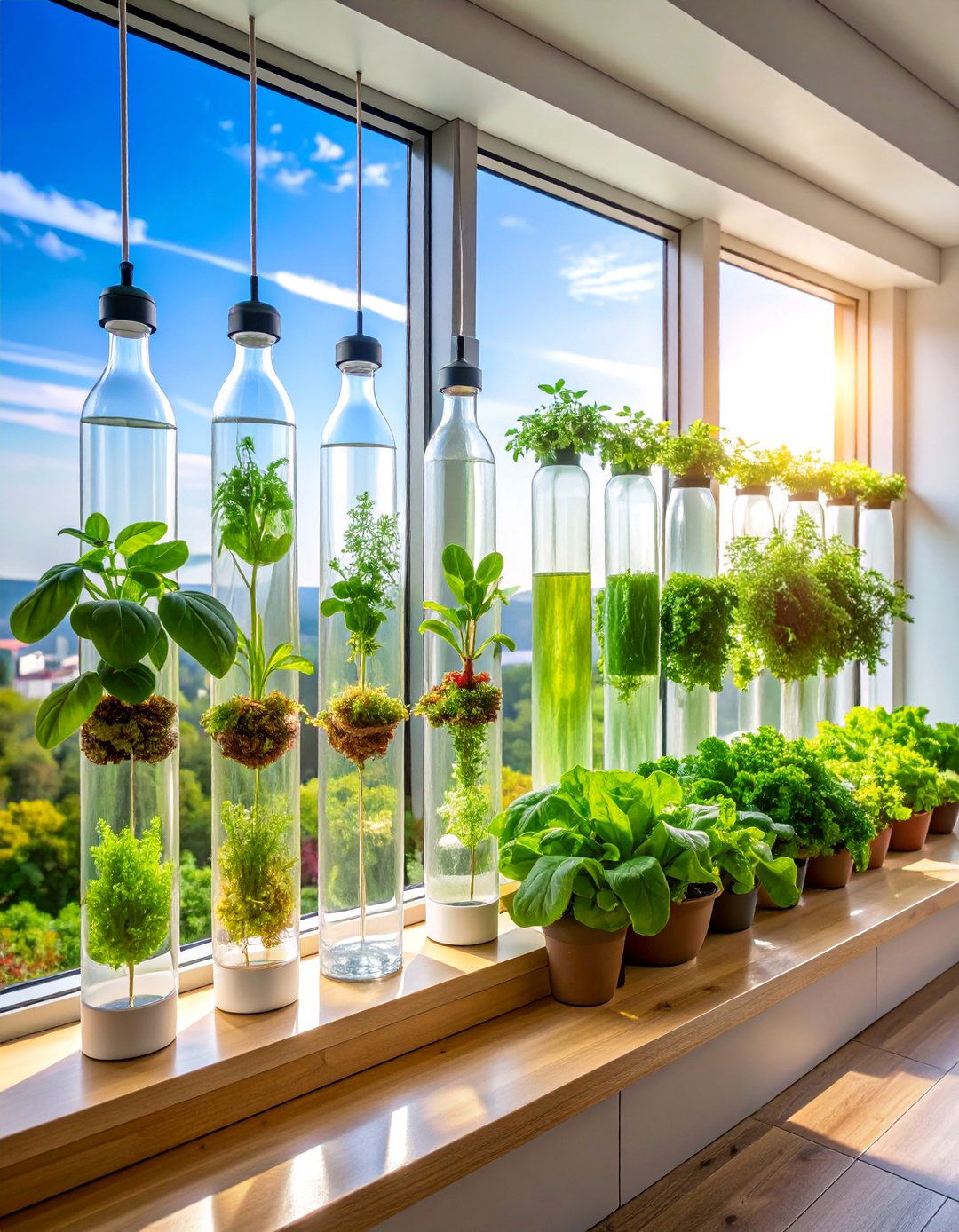
Establish a sophisticated hydroponic garden directly on windowsills using transparent vertical columns that maximize natural light exposure while growing fresh produce year-round. This elegant system employs recycled plastic bottles connected by tubing that circulates nutrient-rich water through plant roots via gravity-fed irrigation. The transparent design allows monitoring of root development while creating an attractive display visible from both interior and exterior perspectives. Automated pumps cycle water continuously while air stones provide essential oxygenation for healthy root systems. This setup works brilliantly for apartments with limited outdoor access, enabling cultivation of leafy greens, herbs, and compact vegetables using only window space and minimal electricity for water circulation and occasional artificial lighting.
5. Pocket Garden Succulent Display with Architectural Integration

Transform small urban nooks into stunning succulent landscapes by creating pocket gardens that integrate seamlessly with existing architectural features like retaining walls, steps, and patio edges. This design approach involves installing small planting pockets between stone work, wood decking, or concrete surfaces, filled with drought-tolerant succulents that require minimal maintenance. The arrangement creates visual interest through varied textures, colors, and forms while softening harsh urban hardscaping. Strategic placement includes crevices in walls, gaps between pavers, and custom-built planters that appear naturally integrated. This low-maintenance approach suits busy urban lifestyles while adding organic beauty to previously unused spaces, creating unexpected garden moments throughout small urban properties.
6. Micro Container Kitchen Garden with Succession Planting
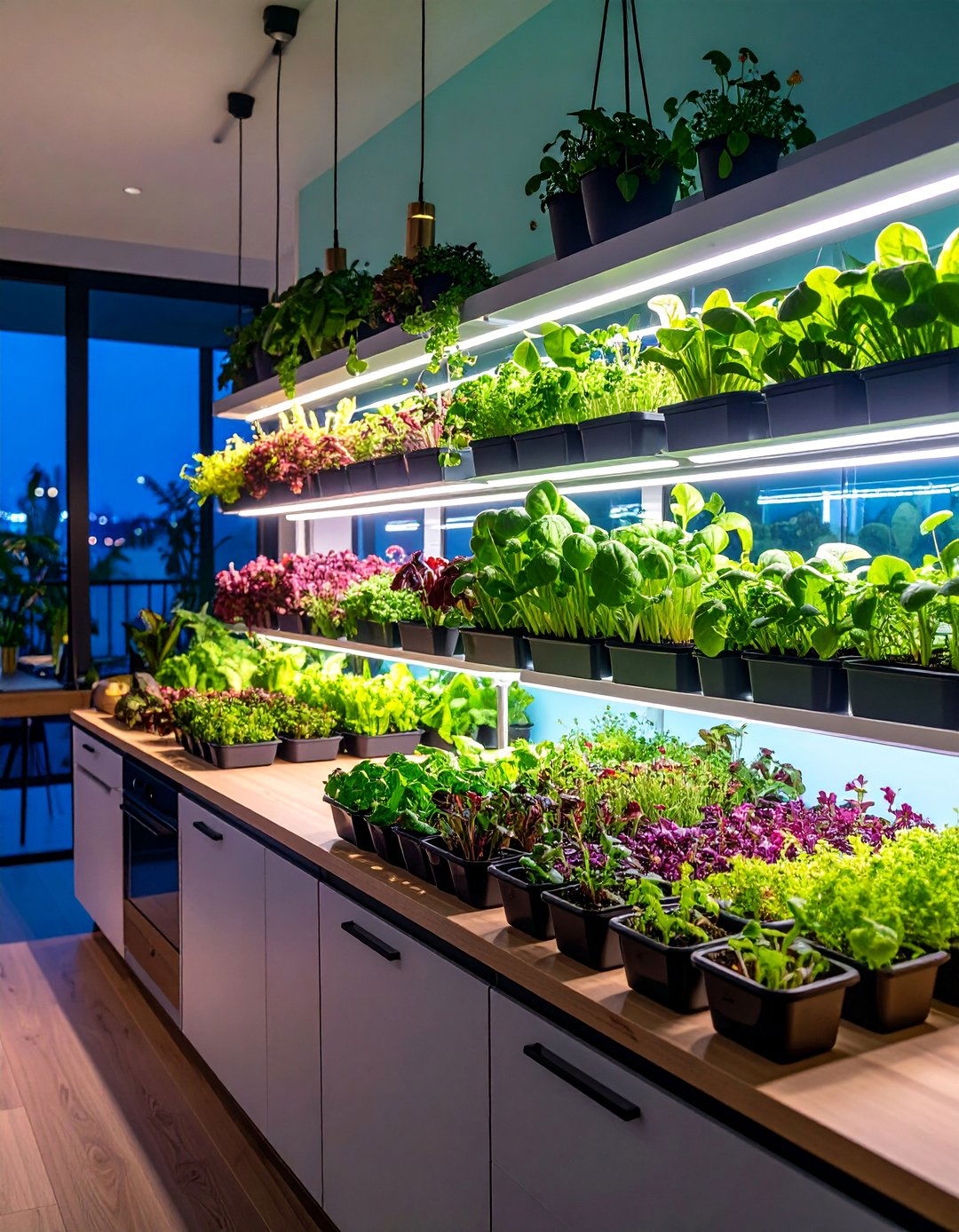
Develop a productive micro-garden system using small containers arranged on kitchen counters, windowsills, and nearby surfaces for continuous fresh herb and microgreen production. This approach employs succession planting in multiple small containers, ensuring constant harvests through staggered growing cycles. The system includes specialized containers for sprouting seeds, growing microgreens, and maintaining mature herb plants that provide fresh ingredients within arm's reach of cooking areas. Self-watering planters reduce maintenance while grow lights extend seasonal availability. The compact design fits any kitchen layout while providing impressive yields of culinary herbs, salad greens, and specialty microgreens that enhance daily cooking with ultra-fresh, pesticide-free ingredients harvested just before use.
7. Ladder Garden Vertical Display with Tiered Growing Zones
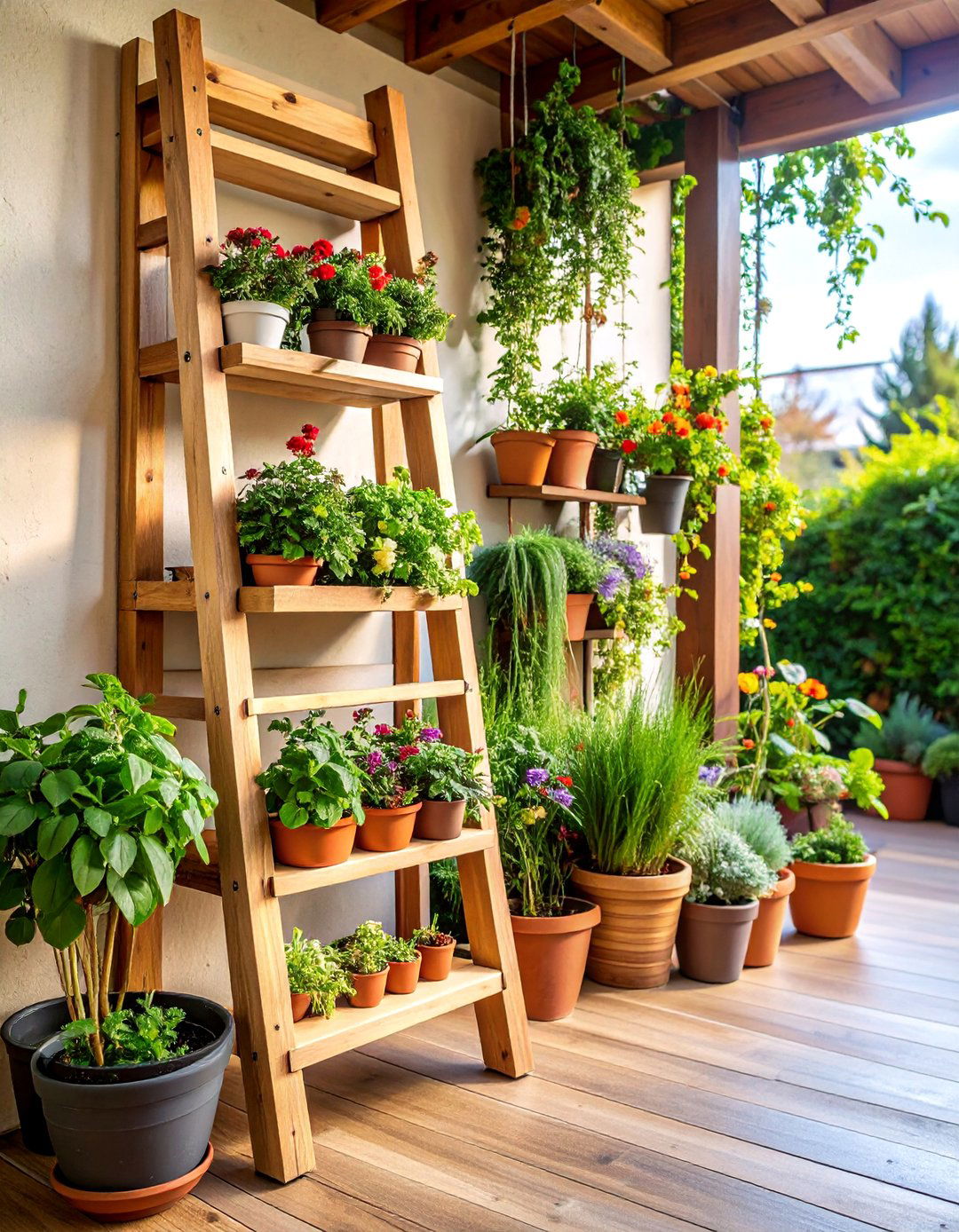
Construct a charming stepped garden using repurposed wooden ladders or custom-built step structures that create multiple growing levels for diverse plant varieties. This rustic yet functional design accommodates different plant heights and growing requirements across various tiers, with larger plants at the base progressing to smaller herbs and trailing varieties at higher levels. Built-in planters attach securely to each rung while irrigation tubing provides consistent watering throughout all levels. The ladder framework supports climbing plants that create natural screening while wooden surfaces weather beautifully in outdoor environments. This versatile structure works perfectly for small patios, balconies, or garden corners where vertical space maximization creates dramatic impact while maintaining easy access for planting, maintenance, and harvesting activities.
8. Hydroponic Tower Garden with Smart Automation

Install a high-tech growing tower that combines advanced hydroponic technology with smart home integration for effortless urban food production. This sophisticated system features programmable LED lighting that adjusts spectrum and intensity based on plant growth stages, while sensors monitor pH levels, nutrient concentration, and environmental conditions. The cylindrical design maximizes growing density with plants arranged in spiraling formation around a central nutrient delivery system. Mobile app connectivity allows remote monitoring and adjustment of all growing parameters. This cutting-edge approach produces exceptional yields of vegetables, herbs, and flowering plants while requiring minimal daily intervention. Perfect for tech-savvy urban gardeners seeking maximum productivity and convenience in compact living spaces through automated growing systems.
9. Hanging Basket Forest with Cascading Plant Design

Create a magical suspended garden using diverse hanging baskets arranged at multiple heights to form a living canopy over outdoor seating areas or walkways. This three-dimensional approach combines trailing plants, upright varieties, and flowering species that create layers of texture and color while maximizing growing space above ground level. Varied basket sizes and materials add visual interest while built-in water reservoirs and drip irrigation systems maintain consistent moisture levels. The arrangement includes edible plants like cherry tomatoes and herbs alongside ornamental varieties that attract beneficial insects. This elevated garden design works beautifully for covered patios, pergolas, or anywhere overhead growing space creates dramatic impact while preserving valuable floor space for seating and movement.
10. Self-Watering Container Vegetable Garden with Succession Crops

Establish a productive vegetable garden using large self-watering containers arranged strategically for optimal sun exposure and efficient succession planting schedules. This system employs containers with built-in water reservoirs that maintain consistent soil moisture while preventing waterlogging through clever overflow mechanisms. The design accommodates a variety of vegetables through seasonal rotation, with cool-season crops giving way to warm-season varieties in a continuous production cycle. Companion planting principles guide crop combinations while vertical supports enable growing climbing varieties like beans and cucumbers. This reliable growing method ensures steady harvests throughout the growing season while reducing daily maintenance requirements for busy urban gardeners seeking fresh, homegrown vegetables in limited spaces.
11. Living Privacy Screen with Edible Landscaping
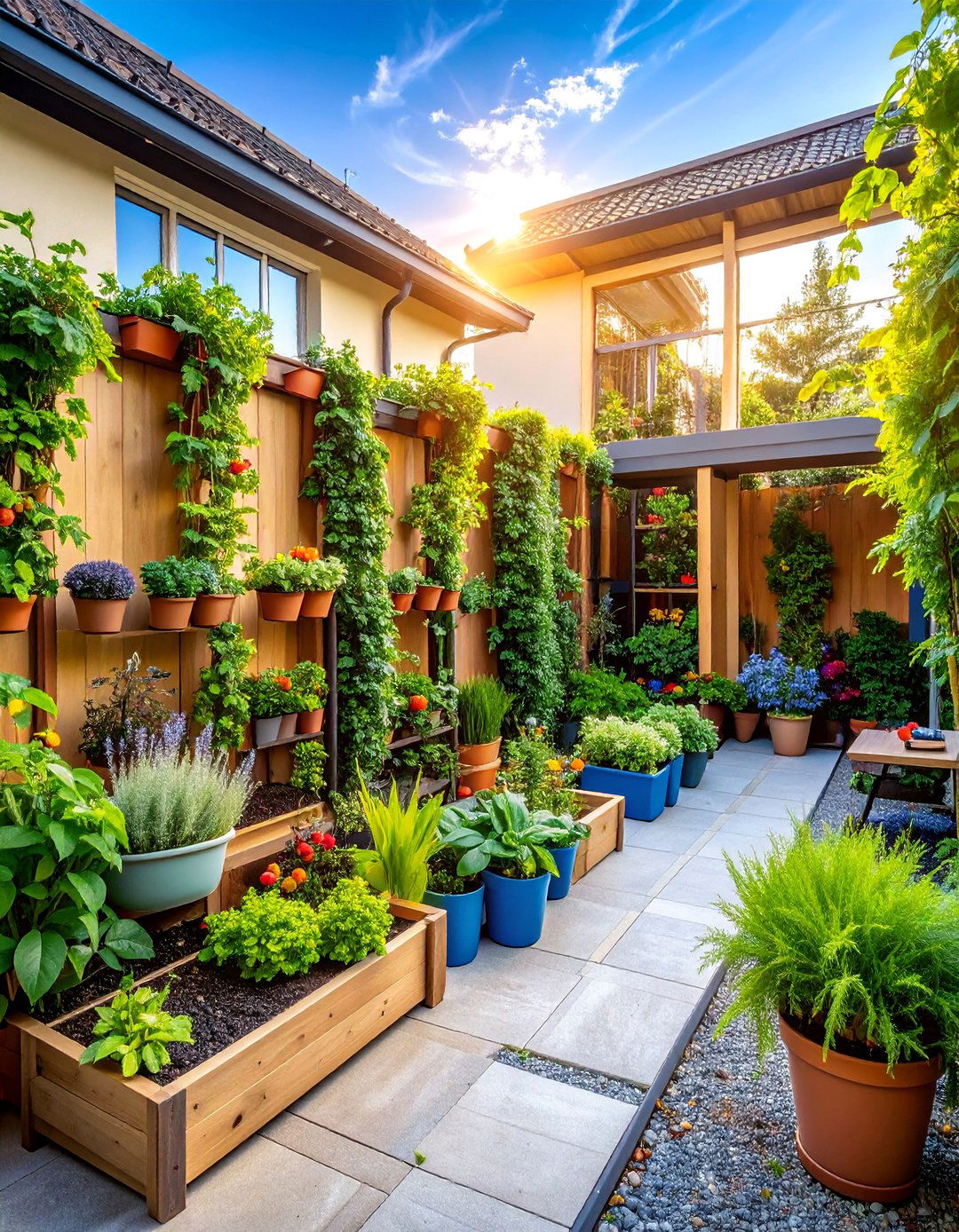
Design a functional privacy barrier using edible plants arranged in tiered containers or raised beds that screen unsightly views while producing fresh food. This dual-purpose approach combines fast-growing climbing plants like pole beans and cucumbers with shrub-layer plants including blueberries and dwarf fruit trees, topped with herbs and flowers. The layered design creates visual density while providing multiple harvest opportunities throughout the growing season. Trellises and support structures guide climbing growth while seasonal color changes maintain year-round interest. This productive landscaping solution works perfectly for defining outdoor spaces, blocking neighboring buildings, or creating intimate seating areas while supplying fresh ingredients for daily cooking needs through strategic plant selection and placement.
12. Aquaponic Growing System with Fish Tank Integration
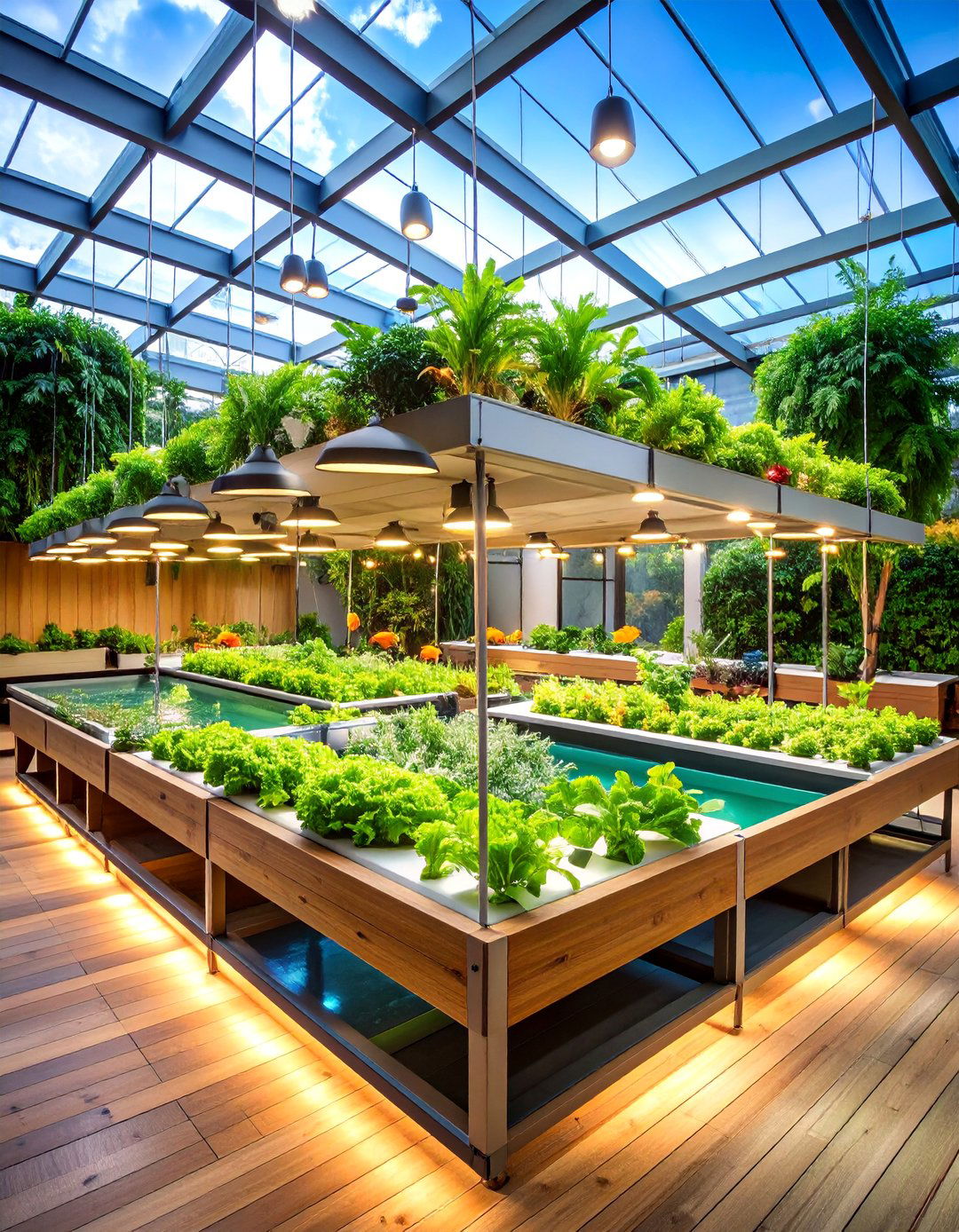
Combine fish raising with plant cultivation in a closed-loop aquaponic system that produces both fresh fish protein and abundant vegetables using minimal space and water. This innovative approach features fish tanks that provide nutrient-rich water to hydroponic growing beds, where plants filter and clean the water before returning it to fish habitats. The symbiotic relationship creates highly efficient food production while requiring less water than traditional gardening methods. Growing beds accommodate leafy greens, herbs, and fruiting plants while fish tanks can house edible species or ornamental varieties. This sustainable system works well for larger urban spaces like rooftops or courtyards where complete food production systems create impressive yields while demonstrating ecological principles through integrated design.
13. Pallet Garden Vertical Herb Wall with Integrated Irrigation
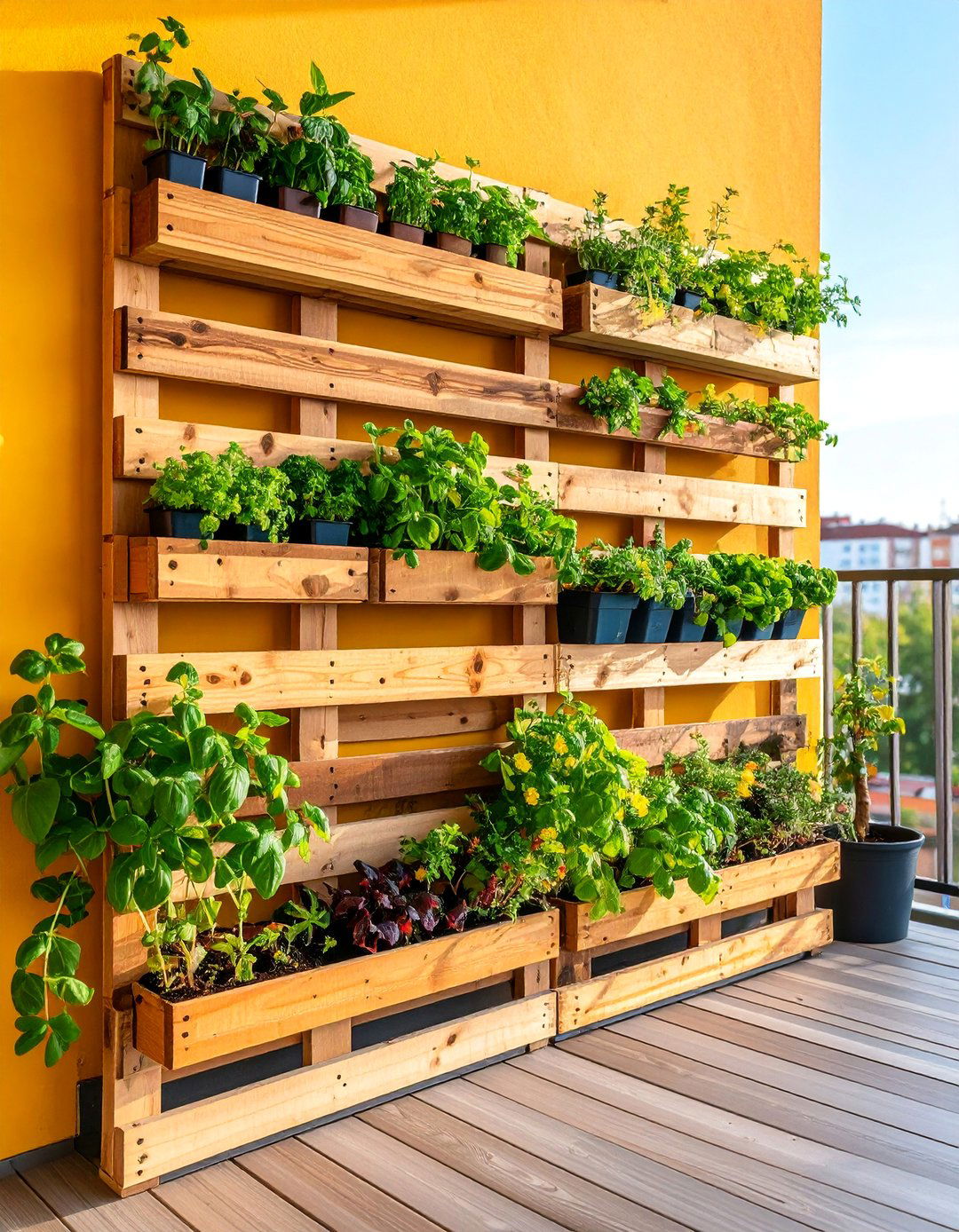
Transform wooden shipping pallets into vertical growing walls specifically designed for herb cultivation with built-in irrigation systems and pocket planters. This budget-friendly approach involves modifying pallets with landscape fabric backing and individual planting pockets that accommodate various herb varieties in a space-efficient vertical arrangement. Drip irrigation tubing snakes through the structure providing consistent moisture while the rustic wood aesthetic complements urban outdoor spaces. The modular design allows multiple pallets to create extensive growing walls while individual sections can be moved seasonally. This sustainable repurposing project combines environmental consciousness with practical food production, creating attractive herb gardens that supply fresh culinary ingredients while serving as interesting architectural features for patios, balconies, or courtyard spaces.
14. Mason Jar Hydroponic Herb Garden with Window Display

Create an elegant hydroponic herb garden using mason jars arranged on custom wooden frameworks designed for windowsill cultivation and attractive interior display. This charming system combines rustic aesthetics with modern growing technology, featuring air stones for root oxygenation and nutrient solutions that support healthy herb development. The transparent jars allow monitoring of root systems while creating beautiful displays that function as living décor. LED grow strips supplement natural light while timer systems automate nutrient circulation. This compact approach works perfectly for kitchen windows, providing fresh herbs within easy reach of cooking areas while creating attractive displays that blend functionality with decorative appeal. The scalable design accommodates various window sizes and growing ambitions.
15. Strawberry Tower Garden with Drip Irrigation System

Construct a specialized tower designed specifically for strawberry cultivation, featuring multiple planting pockets arranged in spiral formation around a central irrigation column for maximum fruit production. This vertical growing system accommodates numerous strawberry plants in minimal floor space while built-in drip irrigation ensures consistent moisture delivery to all planting levels. The tower design facilitates easy harvesting while protecting berries from ground contact and soil-borne diseases. Seasonal varieties provide extended harvest periods while the attractive structure serves as an ornamental garden feature. This space-efficient approach works brilliantly for small patios, balconies, or anywhere fresh strawberries are desired without traditional garden bed requirements. The vertical arrangement also improves air circulation and pest management.
16. Indoor Microgreen Farm with Climate Control System
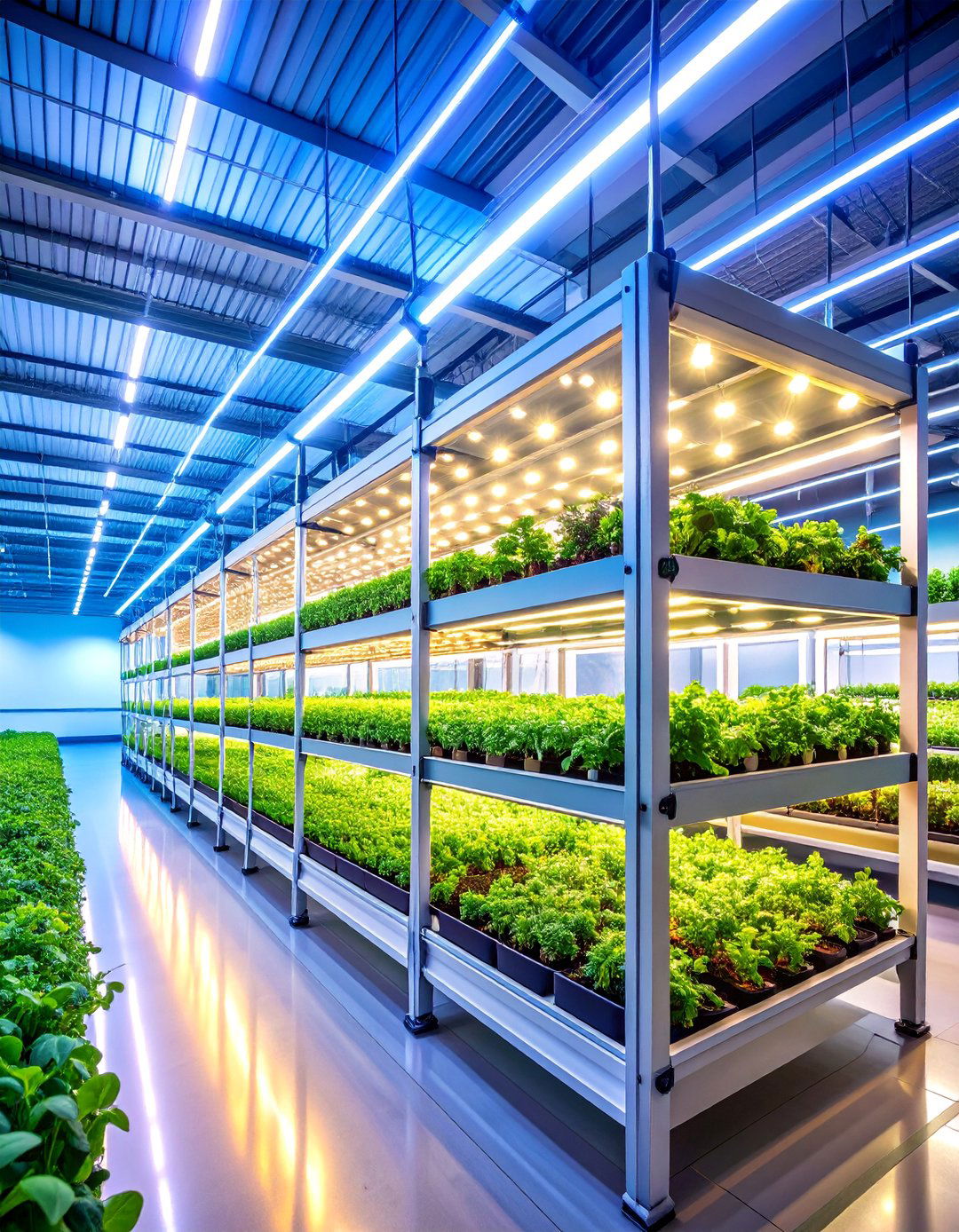
Establish a professional-quality microgreen production system using multi-tier growing racks with controlled environmental conditions for year-round fresh green production. This sophisticated indoor approach features adjustable LED lighting systems, humidity controls, and ventilation fans that create optimal growing conditions regardless of external weather. Growing trays accommodate various microgreen varieties through succession planting schedules that ensure continuous harvests. The climate-controlled environment prevents pest issues while accelerating growth rates beyond outdoor capabilities. This intensive growing method produces exceptional yields of nutrient-dense greens perfect for salads, smoothies, and garnishes. The compact system fits into spare rooms, basements, or dedicated growing spaces while providing restaurant-quality microgreens for health-conscious urban households.
17. Tire Planter Garden with Artistic Paint Design

Repurpose automobile tires into colorful planter containers arranged in creative configurations that maximize growing space while adding artistic flair to urban environments. This eco-friendly approach involves painting tires with weather-resistant colors and patterns that complement surrounding architecture while creating defined growing zones for vegetables, herbs, and flowers. The rubber material provides excellent insulation for root systems while drainage systems prevent waterlogging. Stacking configurations create additional height for climbing plants while grouped arrangements define garden spaces and pathways. This budget-conscious solution works well for community gardens, school projects, or urban lots where creative recycling combines environmental stewardship with productive gardening through imaginative design and strategic plant selection.
18. Gutter Garden Growing System with Horizontal Irrigation

Install lightweight aluminum gutters as horizontal growing containers mounted on walls, fences, or custom frameworks for space-efficient cultivation of shallow-rooted plants. This linear growing approach accommodates lettuces, herbs, strawberries, and flowers while built-in irrigation systems provide consistent watering throughout the entire length. The modular design allows multiple levels creating significant growing area while maintaining easy access for planting and harvesting. Drainage systems prevent water accumulation while the elevated position improves air circulation and reduces pest pressure. This versatile system works perfectly for narrow spaces, along fence lines, or anywhere horizontal growing maximizes available area. The clean, modern aesthetic complements contemporary urban architecture while providing impressive yields from minimal investment.
19. Smart Garden Pod with App-Controlled Automation
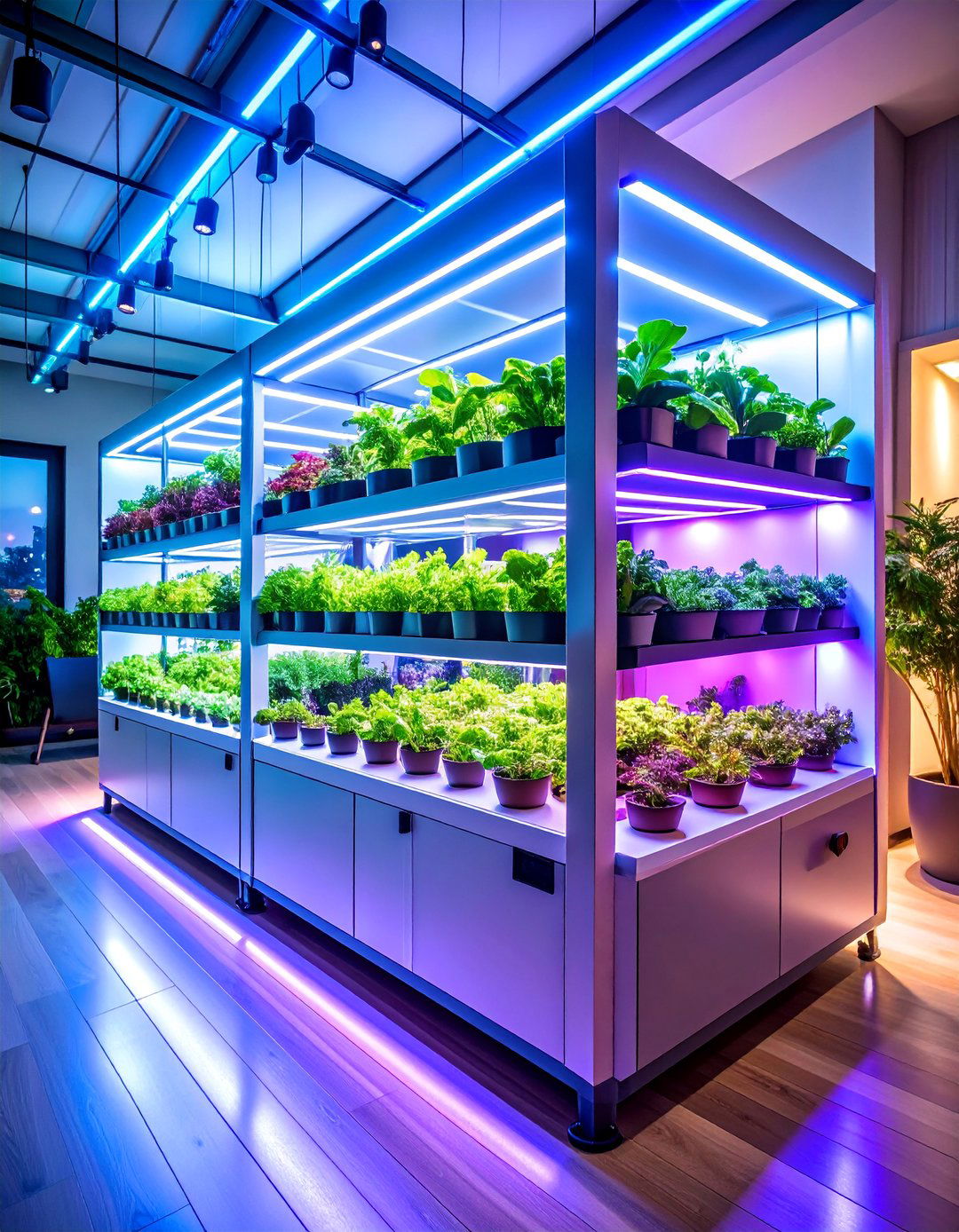
Deploy high-tech growing pods that integrate artificial intelligence with hydroponic technology for completely automated urban food production requiring minimal human intervention. These sophisticated units feature built-in cameras, sensors, and climate controls that monitor plant health and environmental conditions continuously. Mobile app integration provides remote monitoring and control capabilities while machine learning algorithms optimize growing conditions based on plant performance data. The enclosed design protects plants from pests and weather while LED lighting systems provide perfect spectrum and timing for each growth stage. This premium approach suits tech-enthusiast urban gardeners seeking maximum convenience and yields while learning about advanced agricultural techniques through hands-on experience with cutting-edge growing technology.
20. Balcony Greenhouse Mini Structure with Season Extension
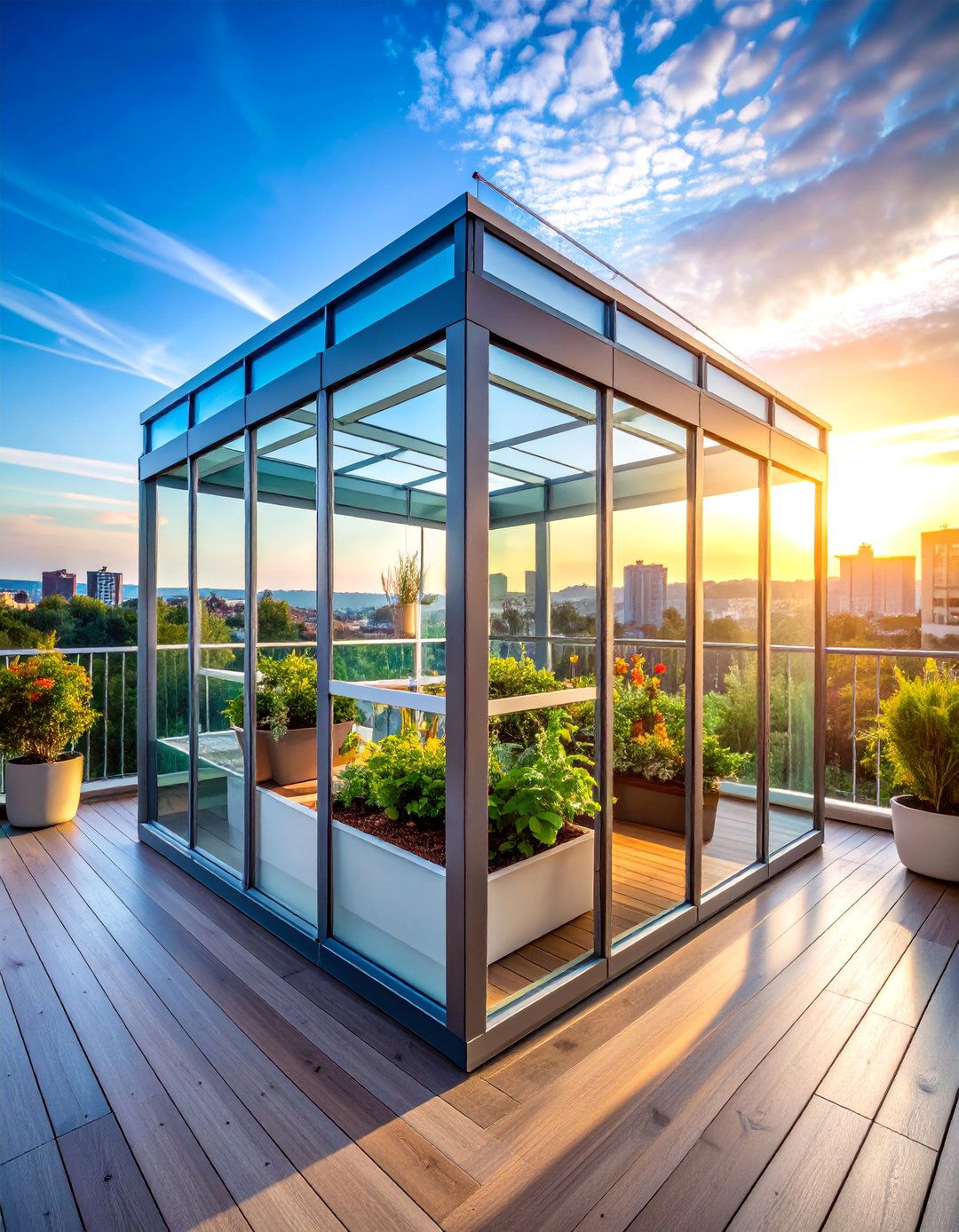
Construct a compact greenhouse structure specifically designed for balcony spaces, featuring transparent panels and ventilation systems that extend growing seasons while protecting plants from harsh urban conditions. This enclosed environment accommodates temperature-sensitive plants year-round while providing controlled conditions for starting seedlings and growing tropical varieties. The structure includes shelving systems for multiple growing levels while automated ventilation prevents overheating during warm weather. Solar-powered fans and optional heating elements maintain optimal temperatures while transparent design maximizes natural light penetration. This protected growing environment works perfectly for urban locations with challenging weather conditions, enabling cultivation of plants typically unsuitable for local climates while providing year-round gardening opportunities regardless of season or weather conditions.
21. Rooftop Wind Garden with Aerodynamic Plant Selection
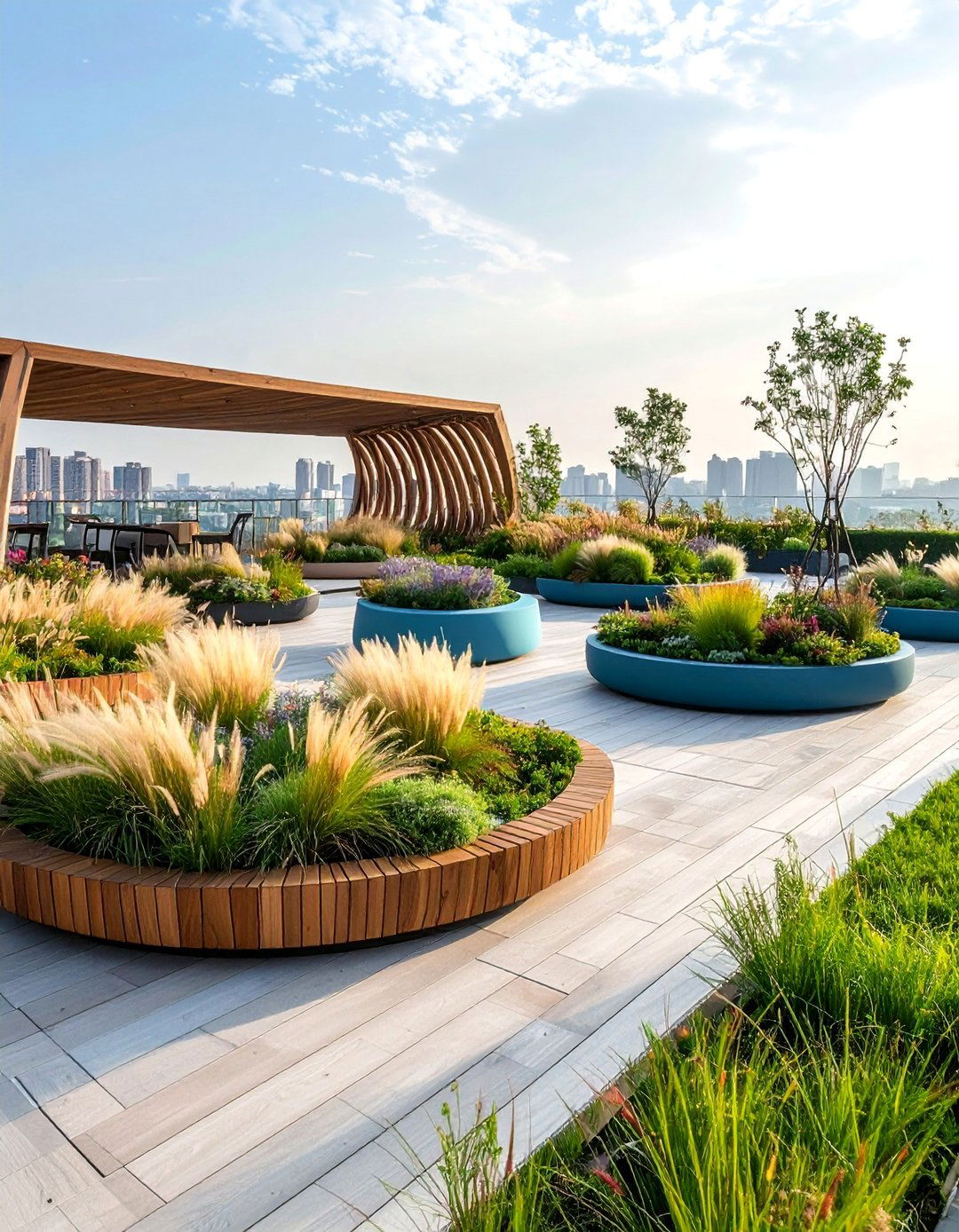
Design a specialized rooftop garden engineered to thrive in high-wind urban environments using carefully selected plants and protective structures that harness rather than fight atmospheric conditions. This approach employs windscreen panels, aerodynamic planter shapes, and flexible plant varieties that bend without breaking in strong gusts. Ornamental grasses, sturdy herbs, and wind-tolerant vegetables create dynamic displays that move gracefully with air currents while strategic placement channels breezes for natural cooling. Weight distribution systems ensure structural safety while irrigation systems account for increased evaporation rates. This specialized design works brilliantly for exposed urban rooftops where traditional gardening fails, creating resilient growing environments that celebrate rather than struggle against challenging wind conditions.
22. Living Wall Salad Garden with Continuous Harvest Design
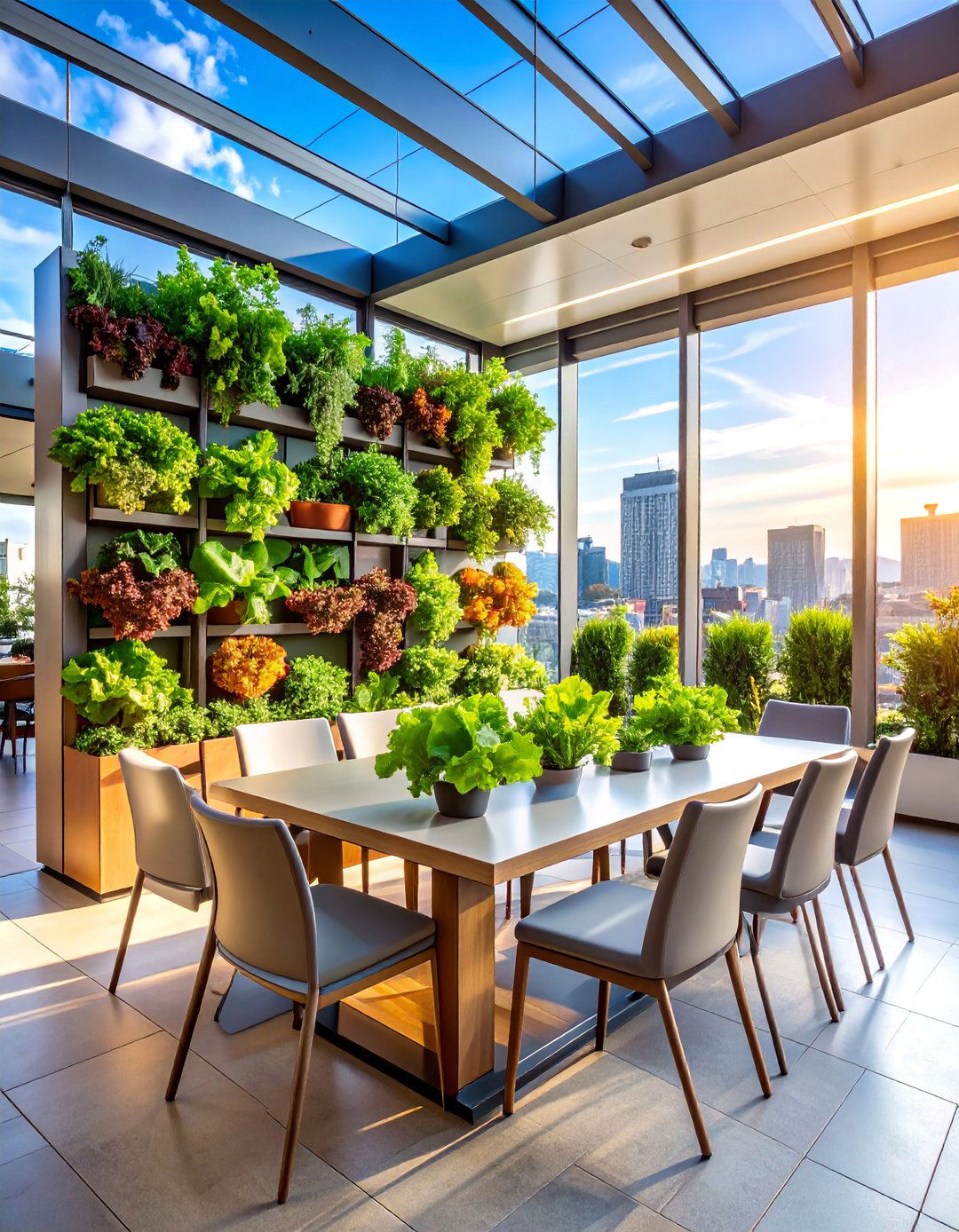
Install a productive living wall system specifically designed for salad green production using pocket planters arranged for optimal light exposure and continuous harvest potential. This vertical approach employs cut-and-come-again varieties that regenerate quickly after harvesting, ensuring steady supplies of fresh lettuce, spinach, arugula, and mixed greens. The modular pocket system allows easy replacement of exhausted plants while integrated irrigation maintains consistent moisture levels throughout the growing surface. LED supplemental lighting extends growing seasons while the attractive arrangement serves as living décor for outdoor dining areas. This specialized focus on salad production provides fresh, pesticide-free greens for daily consumption while creating beautiful vertical displays that enhance urban outdoor spaces.
23. Container Orchard with Dwarf Fruit Tree Collection
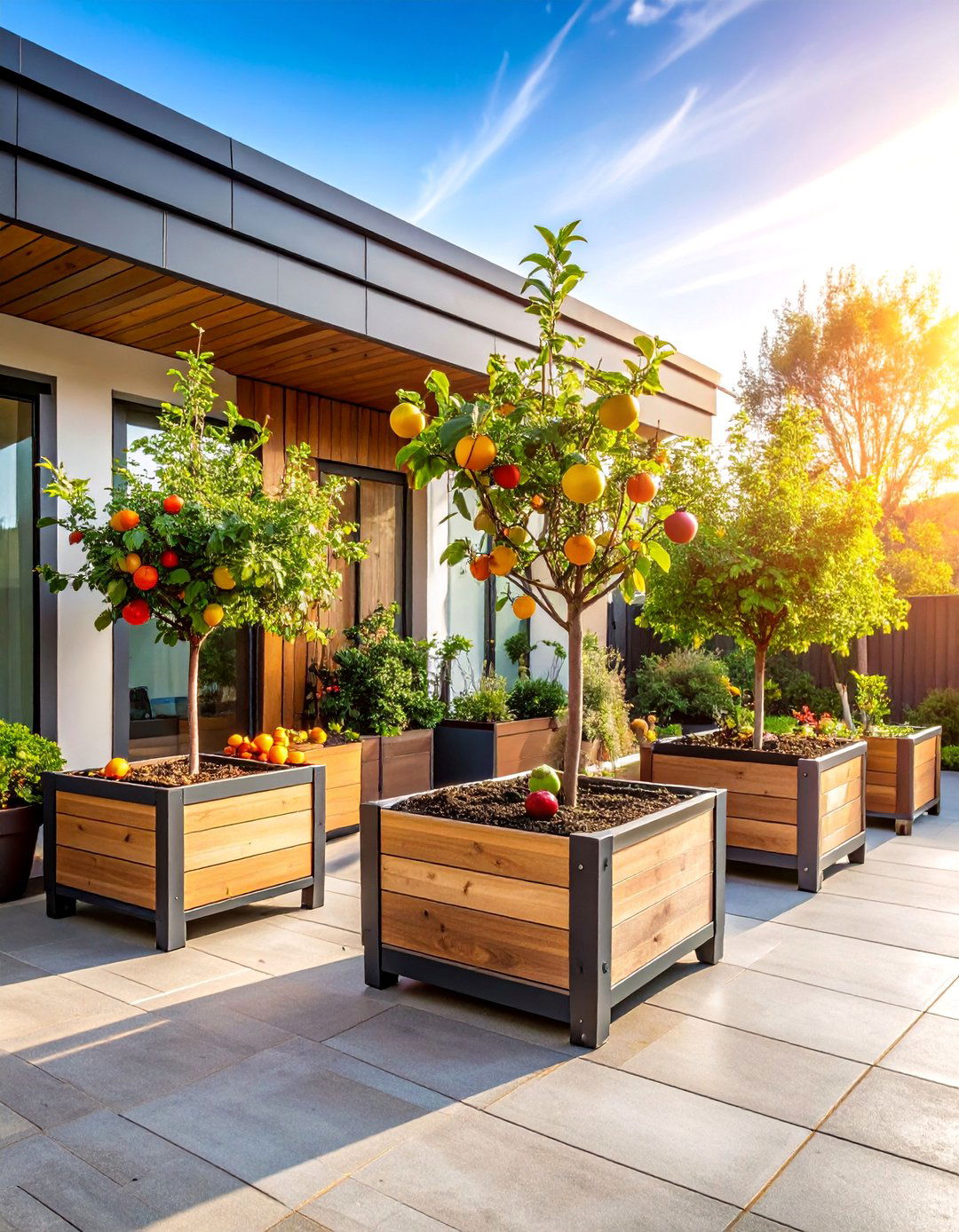
Establish a productive fruit orchard using large containers that accommodate dwarf fruit tree varieties specifically bred for small-space cultivation and container growing conditions. This approach includes apples, pears, cherries, and citrus trees arranged strategically for optimal sun exposure and aesthetic appeal while mobile containers allow seasonal repositioning. Self-pollinating varieties ensure fruit production while dwarf rootstocks maintain manageable sizes suitable for urban spaces. The container design includes built-in support systems for heavy fruit loads while seasonal care schedules maximize harvest potential. This long-term growing investment provides fresh fruit for years while creating attractive landscape features that add property value and seasonal interest through flowering and fruiting cycles.
24. Mushroom Growing Station with Log Cultivation System
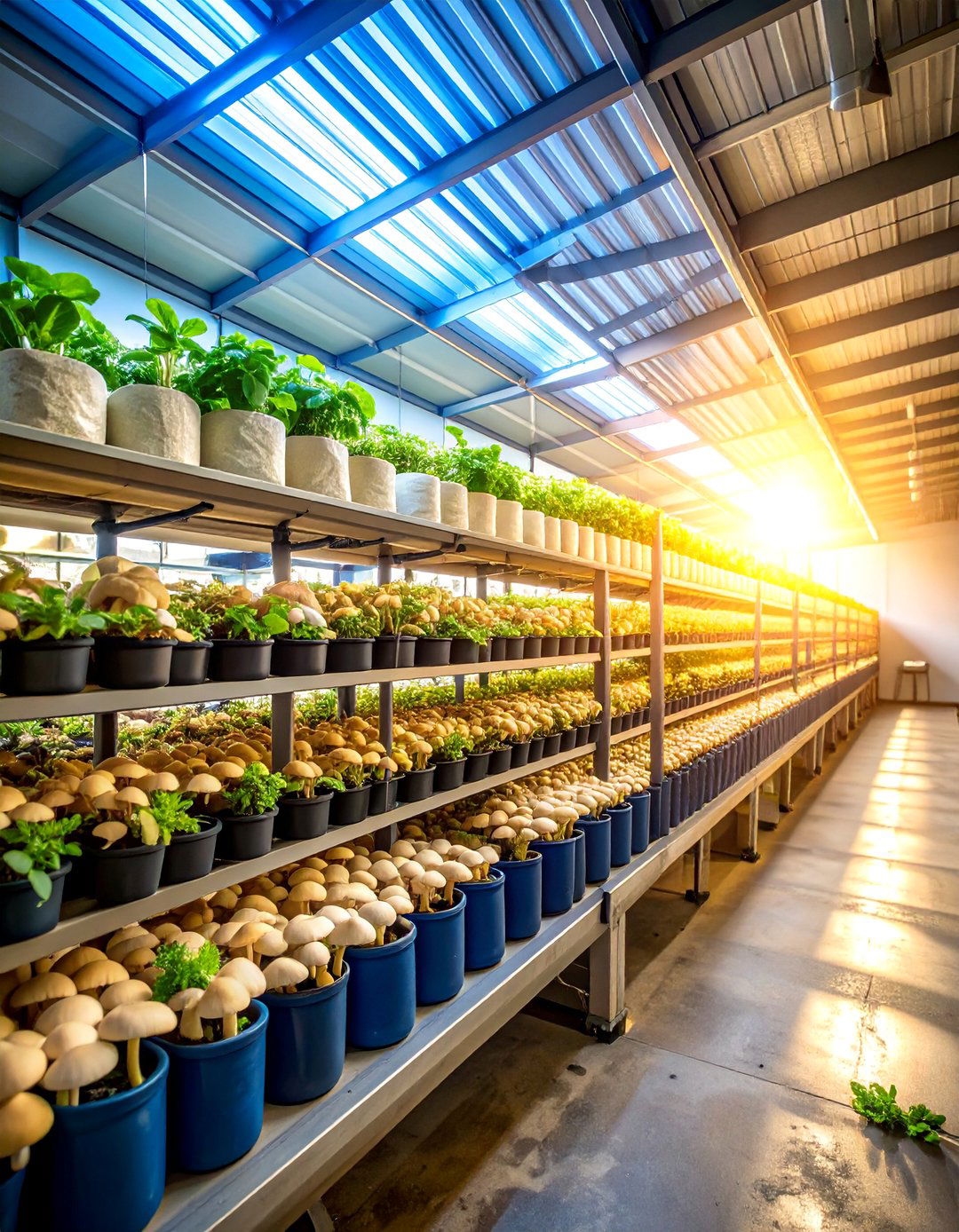
Create a specialized growing area for edible mushroom cultivation using inoculated logs, growing bags, and controlled moisture systems that produce gourmet varieties year-round. This unique approach includes shiitake logs, oyster mushroom bags, and growing kits that thrive in shaded urban areas unsuitable for traditional vegetable gardens. The setup includes misting systems, humidity controls, and protective covers that maintain optimal growing conditions while harvesting schedules provide steady supplies of fresh mushrooms. This alternative growing method works perfectly for basements, shaded patios, or covered areas where conventional plants struggle, adding protein and gourmet flavors to urban food production while utilizing spaces typically considered unsuitable for cultivation.
25. Community Sharing Garden with Modular Growing Systems
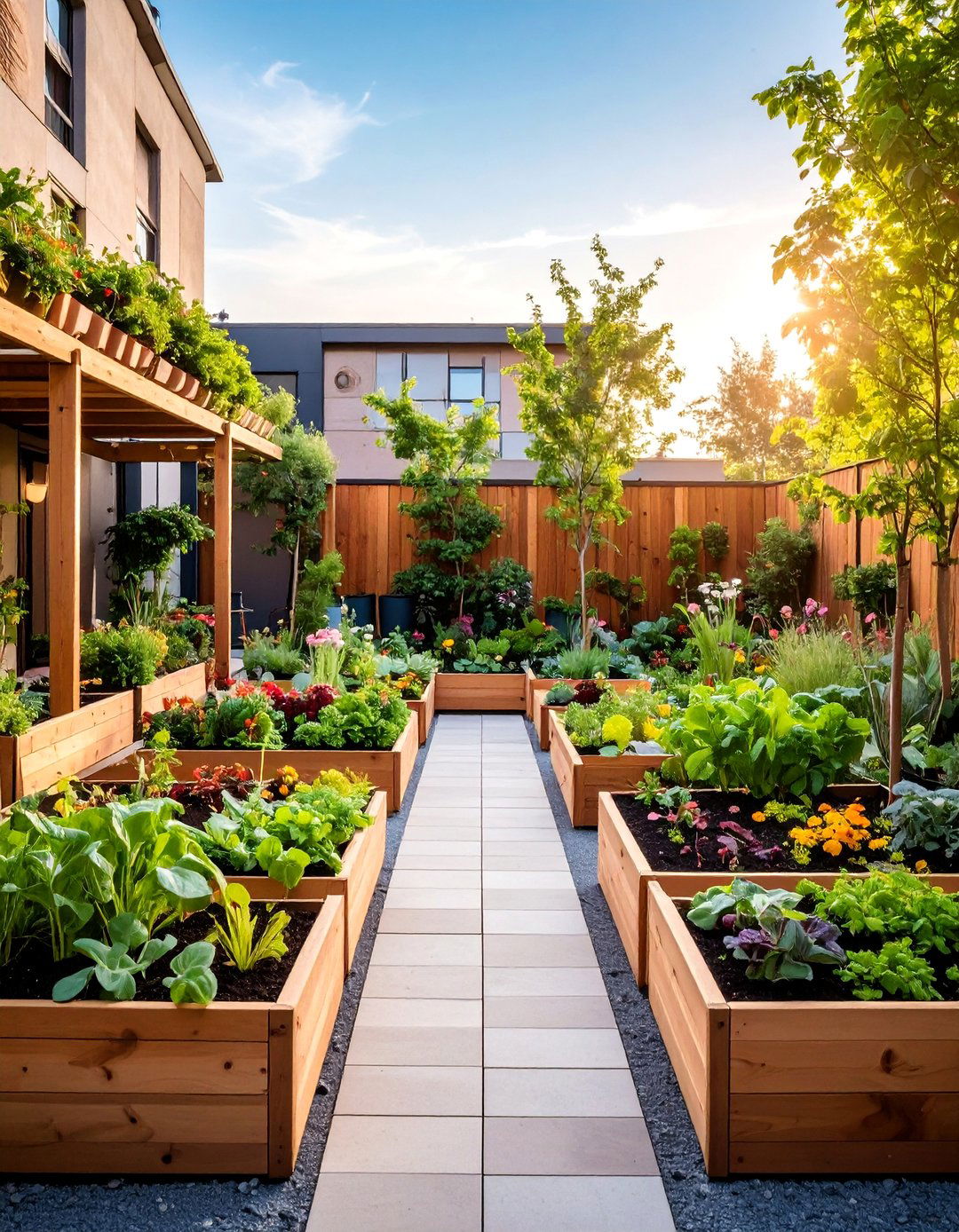
Design a collaborative growing space using modular containers and raised beds that accommodate multiple urban gardeners sharing tools, knowledge, and harvests within limited community areas. This social approach includes individual growing sections alongside shared composting systems, tool storage, and common areas for education and community building. The modular design allows expansion or reconfiguration as membership changes while standardized growing systems simplify maintenance and resource sharing. This cooperative model works brilliantly for apartment complexes, neighborhood associations, or urban lots where individual gardening isn't feasible, creating social connections while providing fresh food through shared labor and knowledge exchange among urban gardening enthusiasts.
Conclusion:
Urban gardening proves that fresh food production and beautiful green spaces can flourish anywhere, regardless of space limitations or challenging city conditions. These innovative approaches transform concrete environments into productive oases that provide fresh ingredients, improve air quality, and create peaceful retreats from urban stress. From high-tech automated systems to simple container arrangements, urban gardening solutions adapt to every budget, skill level, and living situation while building stronger communities through shared growing knowledge and sustainable practices.


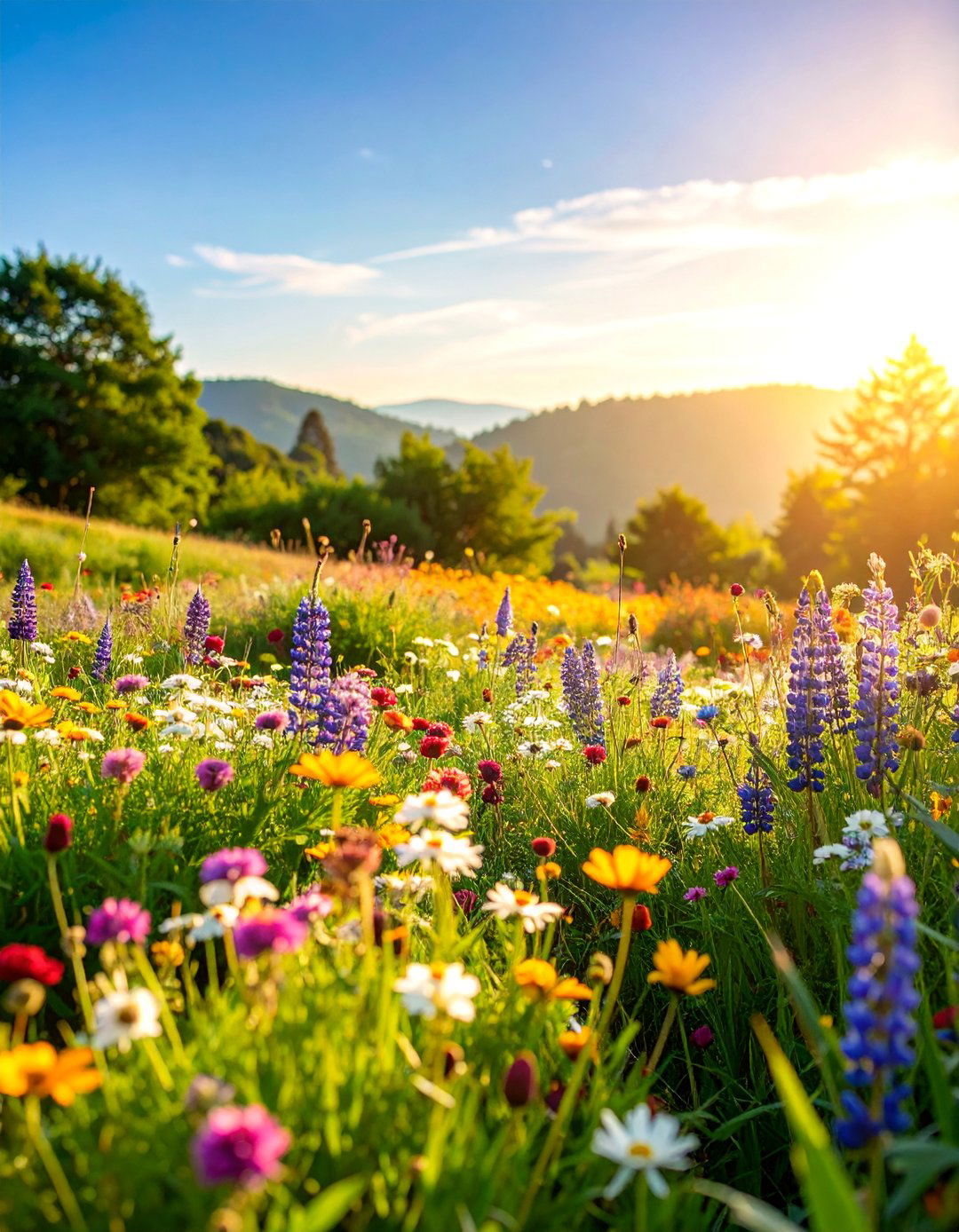

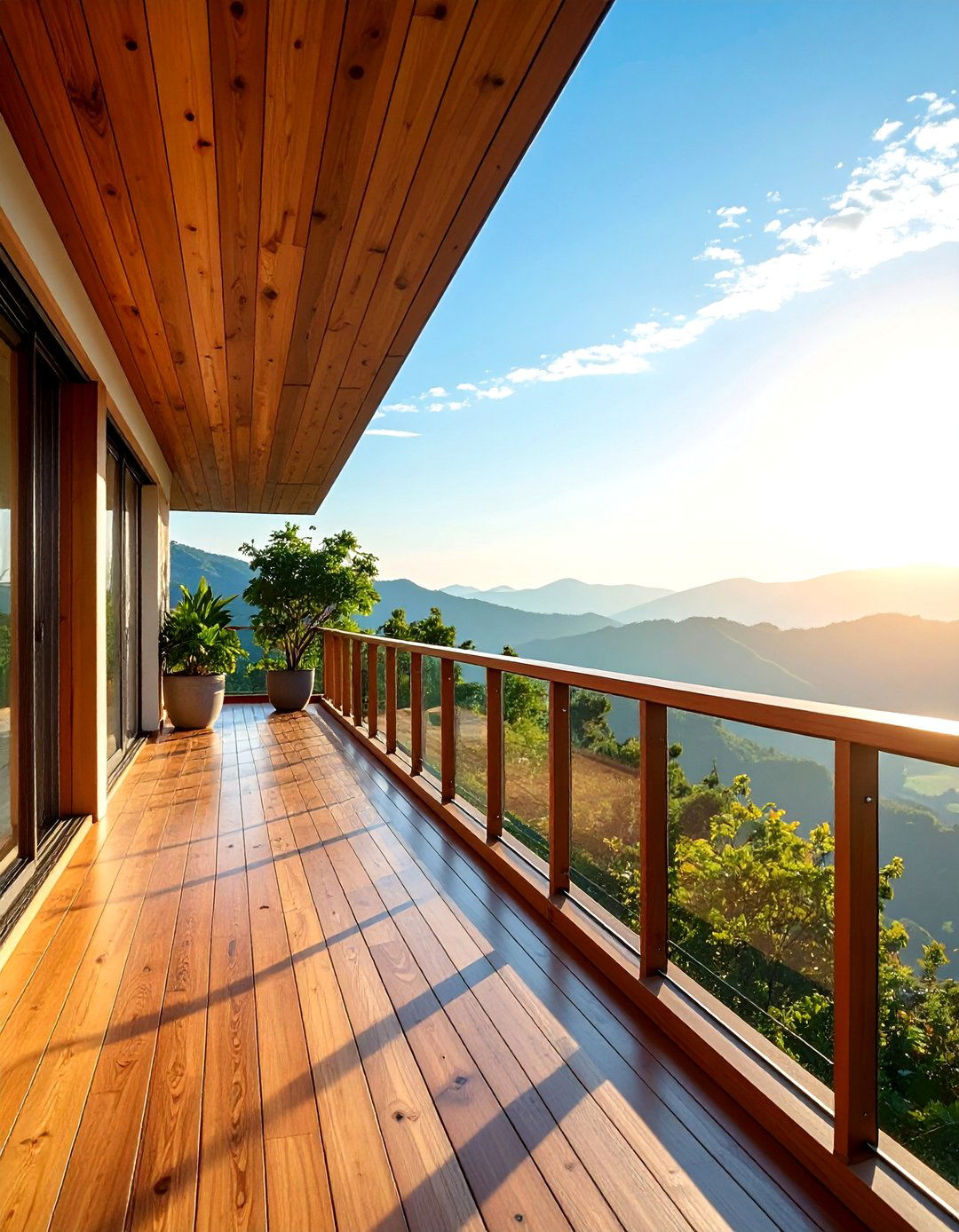
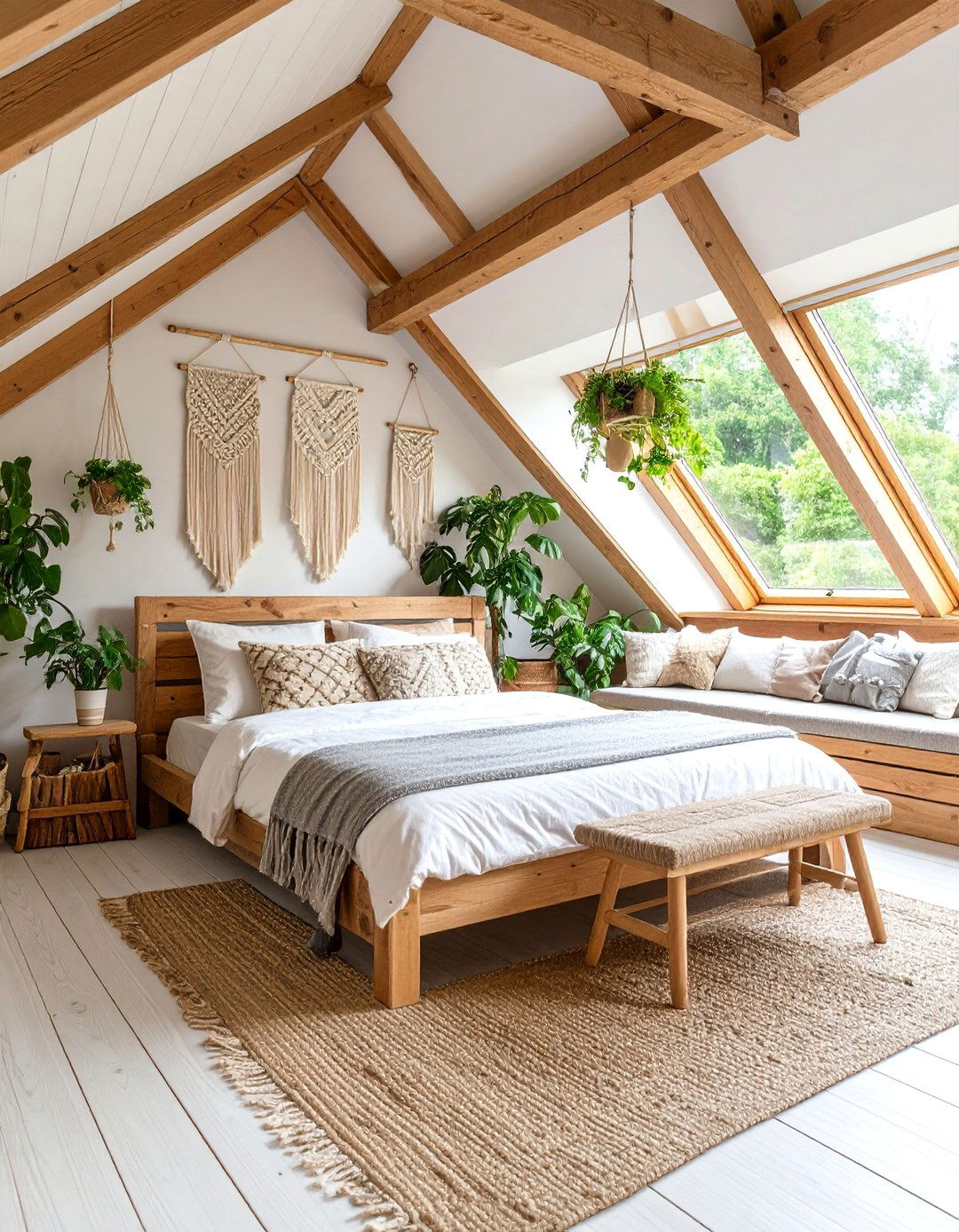



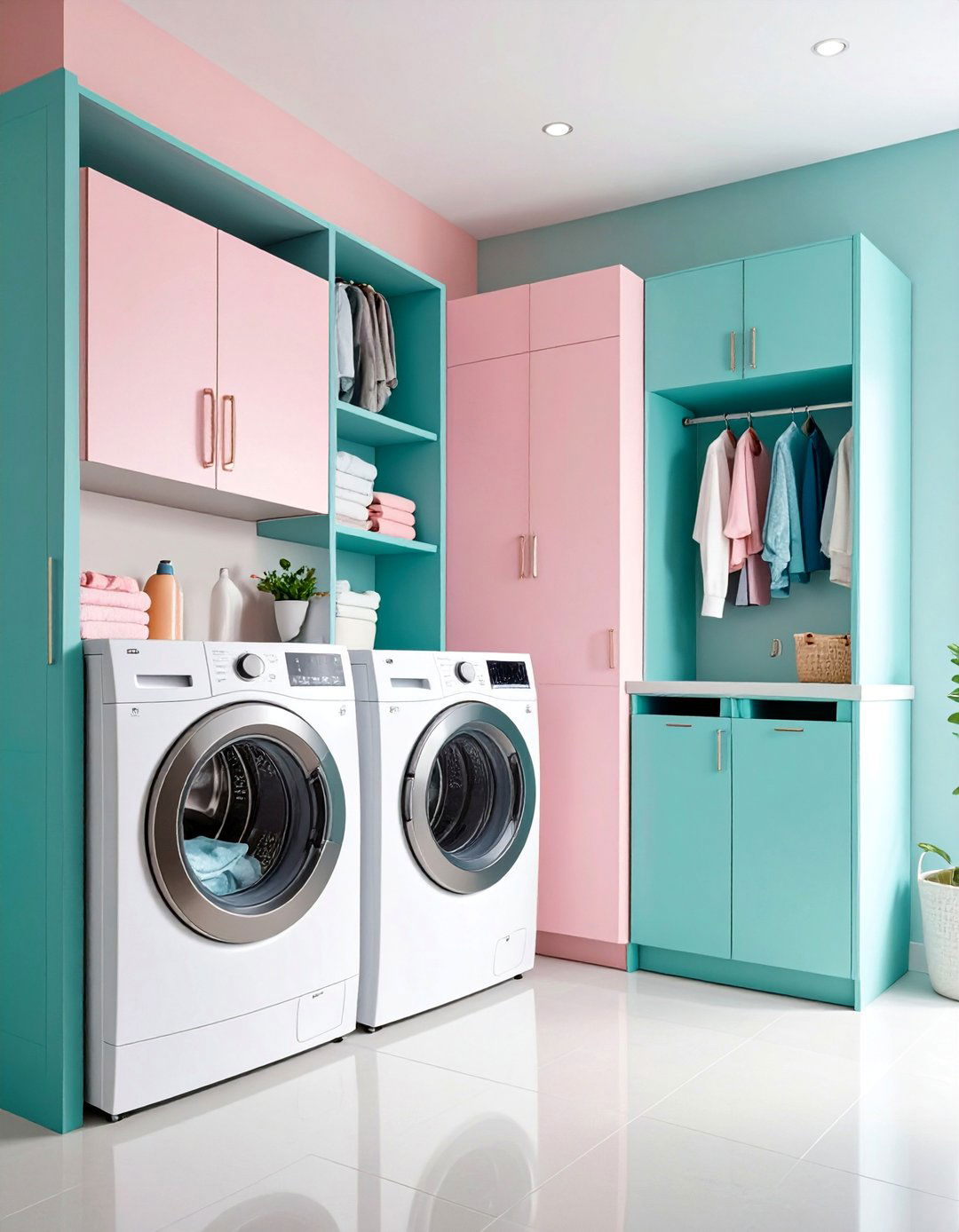
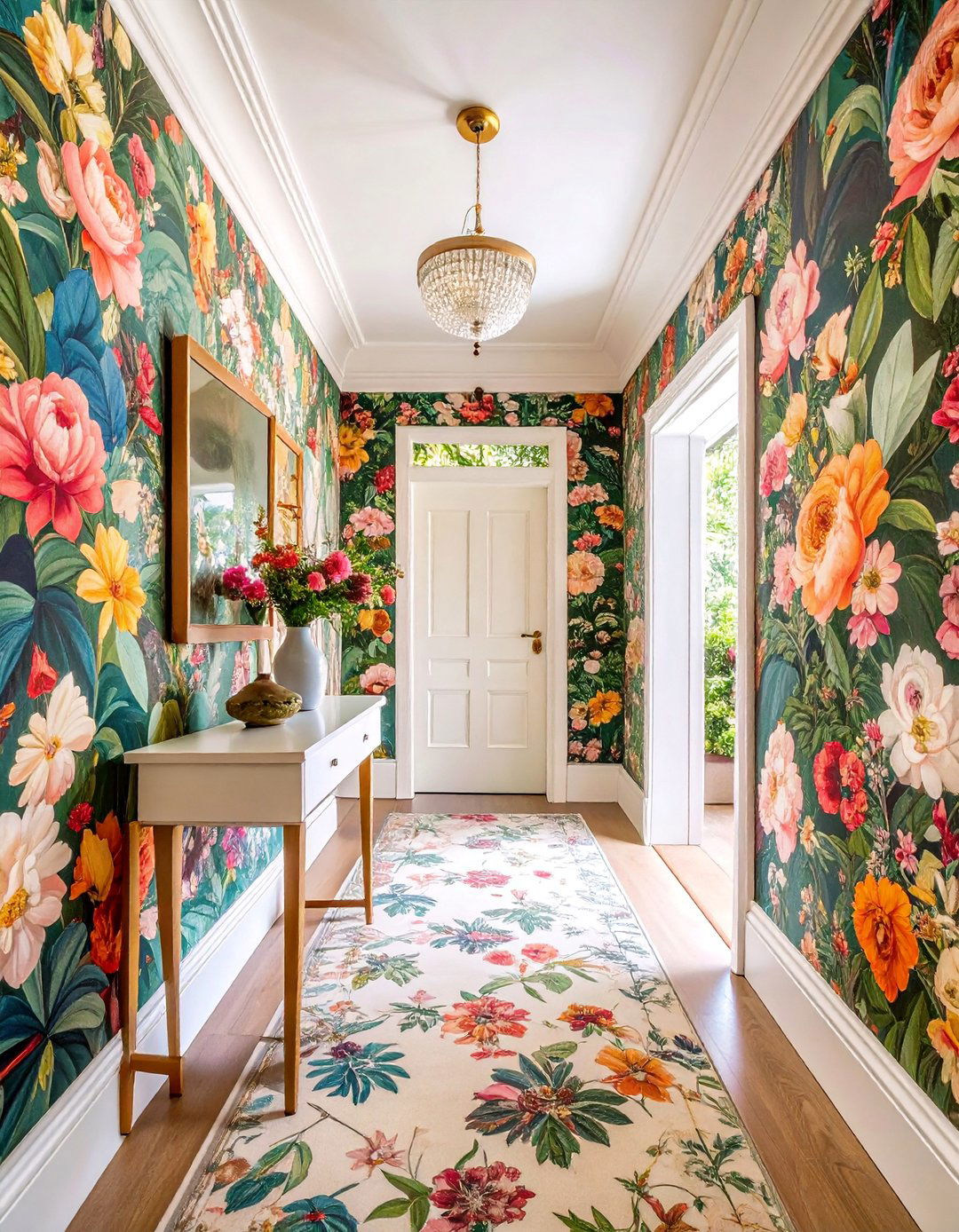

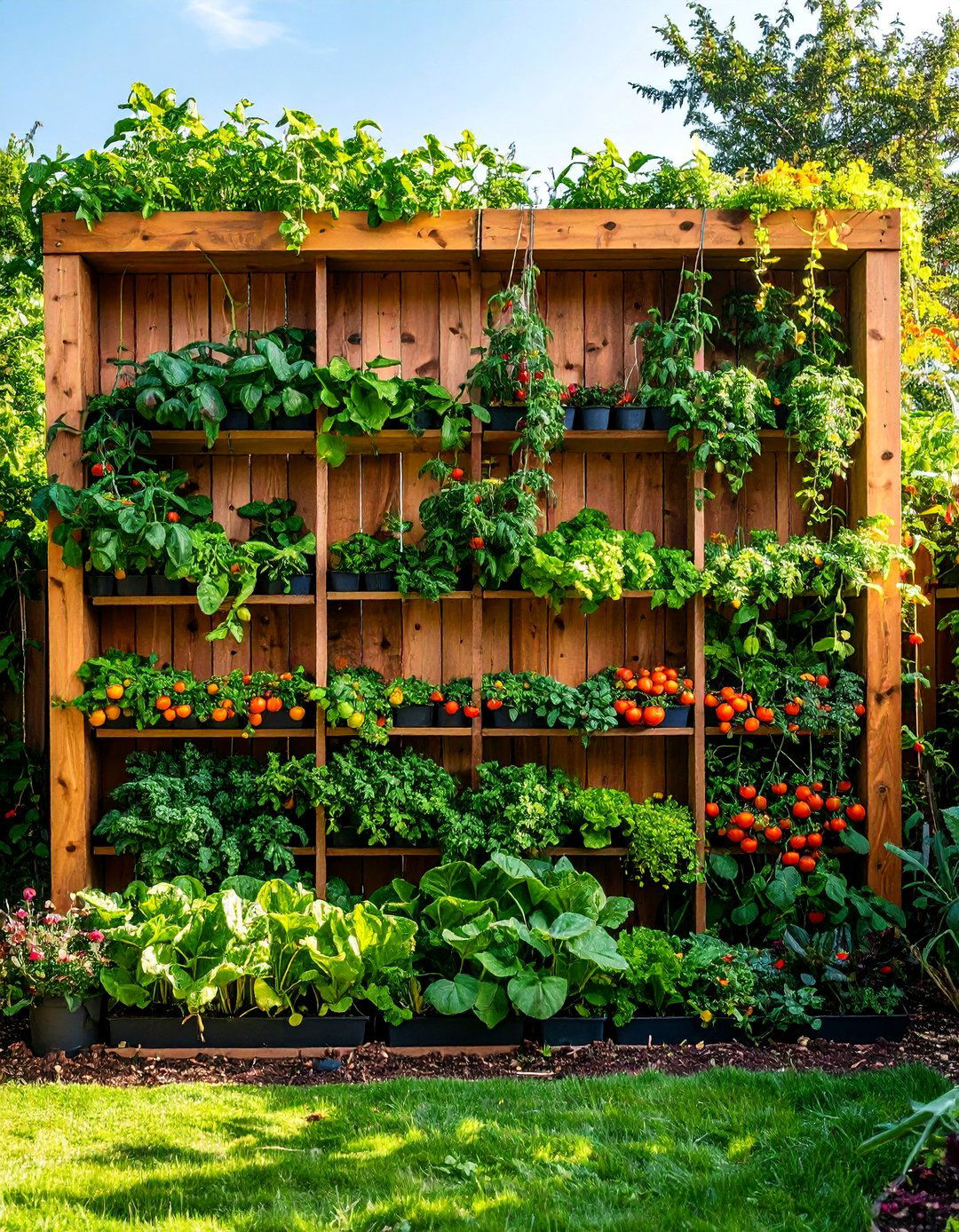
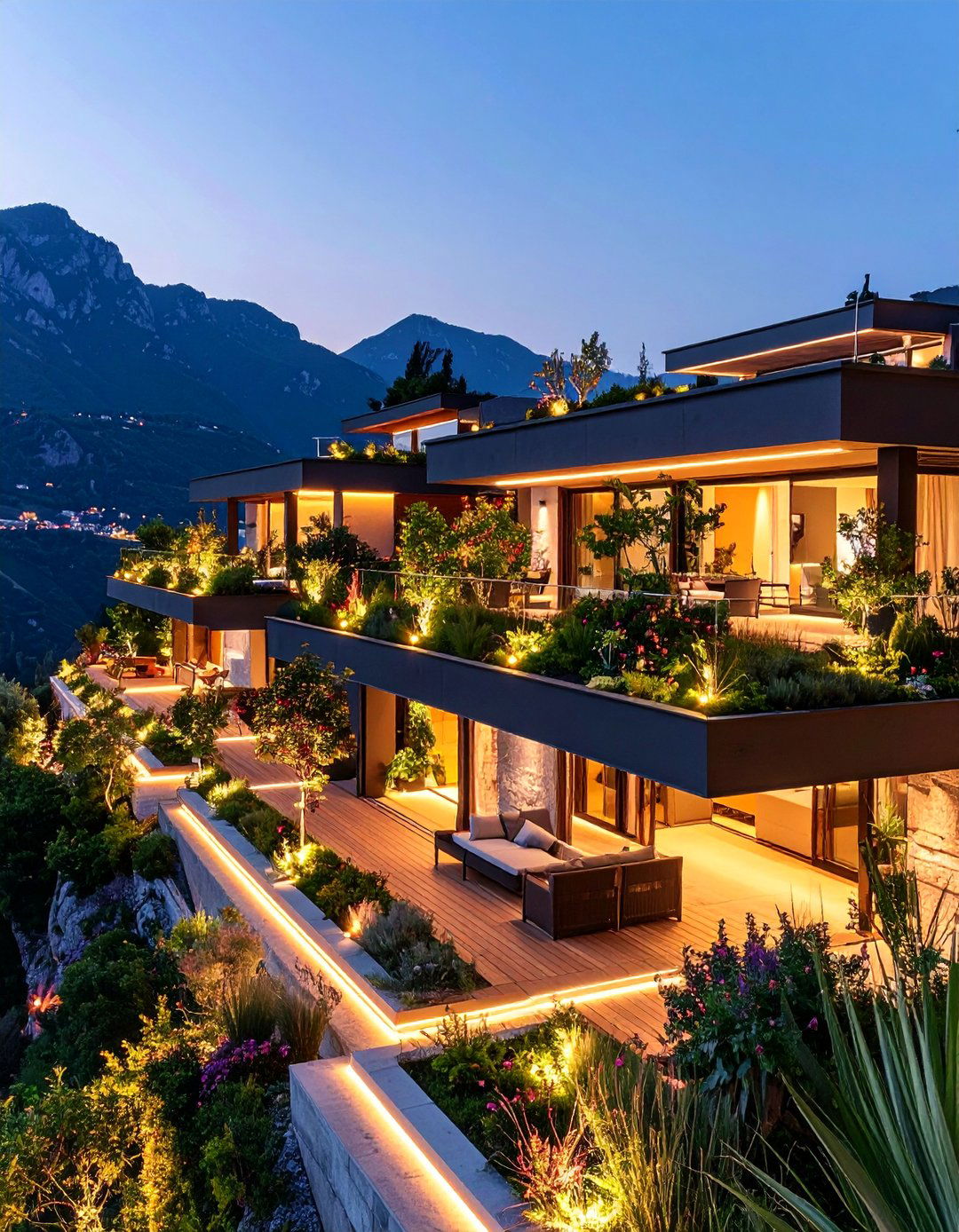



Leave a Reply